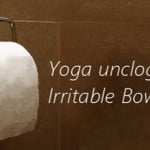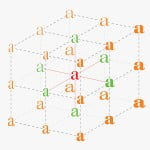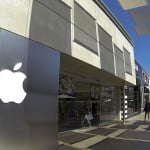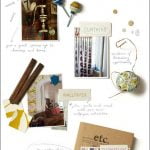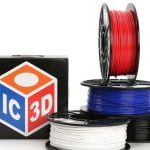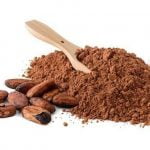
Absolute guests. It’s not difficult to see. Each advertiser realizes how much traffic they’re getting in light of the fact that it’s not too far off in your Examination. However, what occurs next isn’t as self-evident.
That is the reason offering guidance for driving traffic is simple, however website composition tips are hard. There are such countless variables. Indeed, even after 1000+ fruitful website architecture projects, it’s challenging as far as we’re concerned to understand what will work best.
This article has 27 website composition ways to get additional worth from each and every guest. The majority of these tips are upheld by research. These are for novice fashioners and high level UX masters, for independent company and huge venture.
Here is our best exhortation, thoughts and motivation on the most proficient method to plan a site that obtains results. A site that looks delightful, changes over guests and gets additional worth from all of those well deserved visits.
The two most significant examinations refered to here are at the end. Assuming you’re restless, avoid down!
The Primary Format of the Site
Sites are two things: holders and content. The holder is two things: construction and style. How about we start with the first. These tips are about the construction and design of the pages.
1. Influence a visual order
Each page has a visual order. In the event that you’re curious about that idea, here’s our definition:
Website specialists utilize visual order to direct guests regard for significant components first. The site format incorporates the position (high or falling short on the page), sizes (large or little), visuals (video, pictures, symbols) and differentiation (variety and void area).
Consolidating perspectives increases their impact. Everybody will see a huge video, high on the page. Scarcely any individuals will see low difference text encompassed by pictures.
Visual order is the reason your eyes follow a specific way on each page you visit on the web. When utilized intentionally, it directs the guest’s consideration through a progression of messages, toward a source of inspiration.
2. Utilize an enlightening, keyphrase-zeroed in title high on the landing page
The title on the highest point of the landing page (and each page) is either engaging or not. On the off chance that not, the guest will most likely be unable to respond to their most memorable inquiry: “Am I perfectly positioned?”
It’s likewise a valuable chance to utilize an objective keyphrase and demonstrate significance. Yet, a ton of advertisers compose something cunning or unclear all things being equal. Yet, clear is better compared to smart.
Instead of compose an extravagant, yet obscure title, compose something engaging. Ensure that you make sense of what the organization does high up on the page, around the top.
Stand by, the overlap is as yet a thing?
Indeed, there is a crease. For each visit on each screen, there is a perceptible region. At the base is the popular overlay. To see anything beneath this line, that guest should scroll.
Why and in the event that this matters in website architecture is a controversial point. The following are two of the best contentions: “There is no crease!” versus” “The overlay actually matters.”
Obviously, there are great many screen sizes, going from minuscule to tremendous. This site was seen on 958 different measured separates the last month. So a few planners say the overlay is at this point not pertinent.
Be that as it may, here’s the primary concern (get it?) There is as yet a crease for each visit regardless a normal overlay for all visits. Devices like Hotjar show it obviously as a line in the parchment heatmap, for work area/PC, versatile and tablet.
So indeed, there’s an overlay and it makes a difference what you put above and underneath it. One review showed that guests invest 80% of their energy toward the top.
So put your incentive, that 8-word form of what you do, high on the page, toward the top.
3. In any case, don’t put every one of your suggestions to take action at the top
Guests might be investing more energy there, however that doesn’t imply that they’re prepared to make a move. A ton of influence happens farther down the page.
At the point when Chartbeat dissected 25 million visits they found that most commitment occurs underneath the overlap. Content at the top might be apparent, it’s not really going to be the best spot to put your suggestions to take action.
One proviso about this as often as possible refered to study: Chartbeat is utilized generally by news sites, which are altogether different from showcasing sites. Nobody does a lot of toward the top on a news site! Typical website composition tips don’t matter.
Settle on certain to put decisions to activity farther down the page, where interest is probably going to be high.
4. Make it a tall page. Answer every one of your guests’ inquiries.
More pixels implies more space to respond to questions, address protests and add steady proof. On the off chance that the guest doesn’t find a solution to a significant inquiry, they can essentially continue to drop down the page. Whenever they are fulfilled, they’ll basically quit perusing.
You could never remove somebody during a business meeting and quit responding to their inquiries, okay? That is every one of the a short page does; it quits responding to questions.
Here’s where the popular review from Insane Egg comes in. They overviewed their crowd, found their top different kinds of feedback, and fabricated a tall page that tends to everything.
The page was 20x longer. The transformation rate increased by 30%.
5. Show each thing in turn
“I like spotless, present day plans.” That is what the vast majority of our clients let us know when we start website composition projects. They frequently allude to Apple’s site for instance.
Guests could do without mess. We like whitespace. All in all, we like low visual intricacy.
In 2012, Google set off to find what kinds of sites are viewed as lovely to guests. It’s a learn about straightforwardness with an exceptionally muddled name: The job of visual intricacy and prototypicality in regards to initial feeling of sites: Pursuing figuring out stylish judgments.Opens another window
They discovered that more intricate plans are less inclined to be seen as gorgeous.
This makes sense of the pattern toward single segment formats and tall pages. Plans with numerous sections (left side route, content region, right rail) are more mind boggling, with additional visual components inside the guests field of vision.
So cut the messiness. Make one of two components the concentration at each parchment profundity.
6. Stick to standard designs
That equivalent concentrate by Google viewed that as “high prototypicality” additionally connects with apparent excellence. As such, abnormal isn’t generally beautiful. A site that keeps website architecture guidelines is bound to be cherished.
The locales considered the most lovely have both high prototypicality and low visual intricacy. They are both straightforward and clean.
Think about it along these lines, it’s great to separate your image, however the format isn’t the spot to make it happen. Be different in WHAT you say. In any case, be normal in HOW your site is utilized.
A few vehicles look astonishing. They’re unique. They’re wonderful. Yet, they actually have entryways on the sides, wheels on the base and headlights in front.
In any case, what’s norm? As indicated by our own examination, these are the standard components for a site:
The “standard” site with high prototypicality incorporates the accompanying:
Logo in the upper left
Level route in the header
Search bar at the top
Social symbols at the base
Versatile responsive plan
7. Be careful with “misleading bottoms”
Present day showcasing sites, particularly the deals pages, are worked with page blocks. These are lines of content, frequently with a picture on one side and text on the other, streaming down the page in a solitary section.
Here is the life systems of a run of the mill administration page on a lead age site.
As the outline shows, the footer has a more obscure foundation tone. Such countless locales do this that guests presently anticipate that that a switch should a hazier foundation implies the lower part of the page.
Yet, on the off chance that the plan has a pageblock with a dim foundation, the guest could think they’ve raised a ruckus around town and quit looking over. It’s a misleading base.
Simply be intentional while choosing foundation tones for page blocks. To be protected, pick just slight varieties or just consistently utilize white or light dim. Then, at that point, change to dull dark or dark in the footer.
8. Stay away from merry go rounds and pivoting sliders
They’ve been well known for a really long time and clients love them. Be that as it may, there is an issue with the landing page slideshow: guests could see the main slide.
There have been a great deal of studies that reach a similar resolution. Messages on resulting slides are less inclined to be seen and suggestions to take action are probably not going to be clicked. Simply check out at the navigate rates for the slides on a college site.
They might be famous on the grounds that they’re not difficult to get endorsed. Various partners from various divisions all get a few pixels toward the top. They’re great for inner governmental issues, not really for guests.
9. Keep away from tabs and accordions
Here is one more method for removing things from stowing away: keep away from tabs and expandable boxes of content.
Knowing that up to 76% of site guests are filtering, you can make your substance more apparent to them by keeping everything uncovered, with compelling reason need to snap to uncover something.
On the off chance that tabs and expandable accordions were viable, you’ll presumably see them on Amazon.
Keep in mind, looking over is quicker and more straightforward than clicking. Assuming that the guests need to point and snap or tab to have the option to see something, they are more averse to see it.
10. Use individuals pictures
Faces are interestingly strong symbolism. From the time we are conceived, we look at faces more anything more. The attractive force of individuals pictures is extremely valuable in website composition.
Besides the fact that countenances draw consideration, they relate with transformation. The renowned contextual analysis by Headquarters showed a colossal lift in results when countenances and tributes were joined on a deals page.

